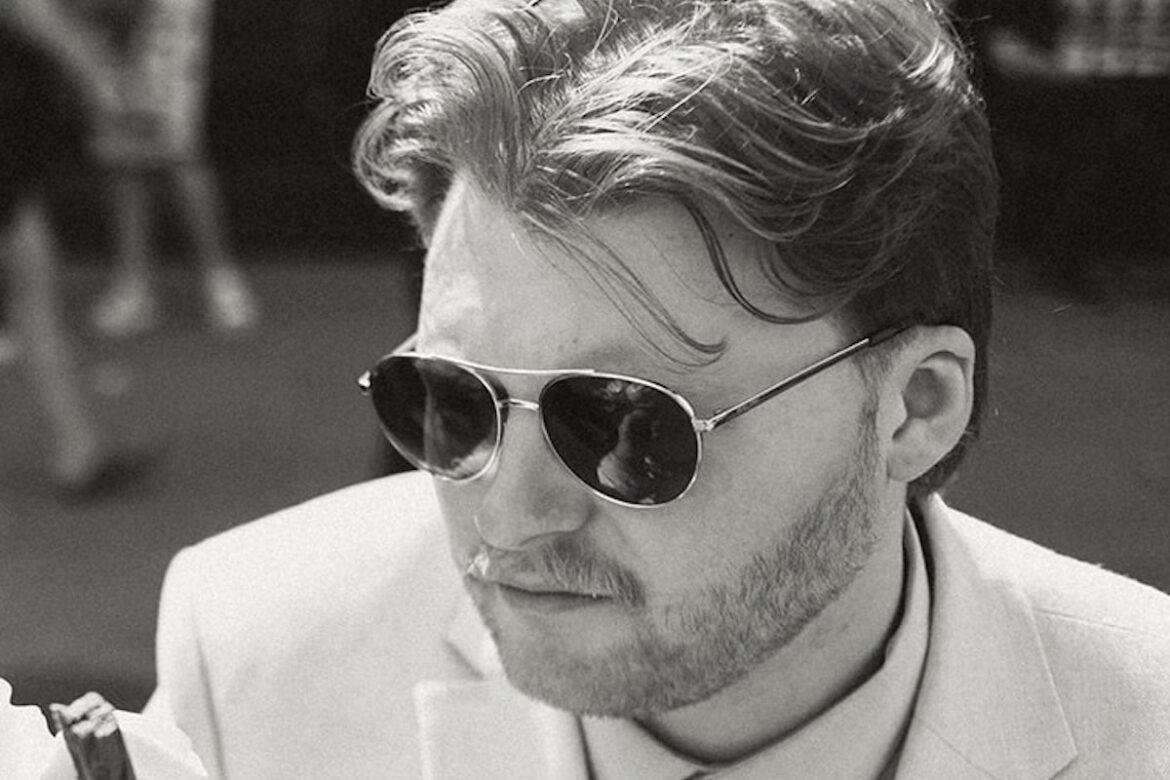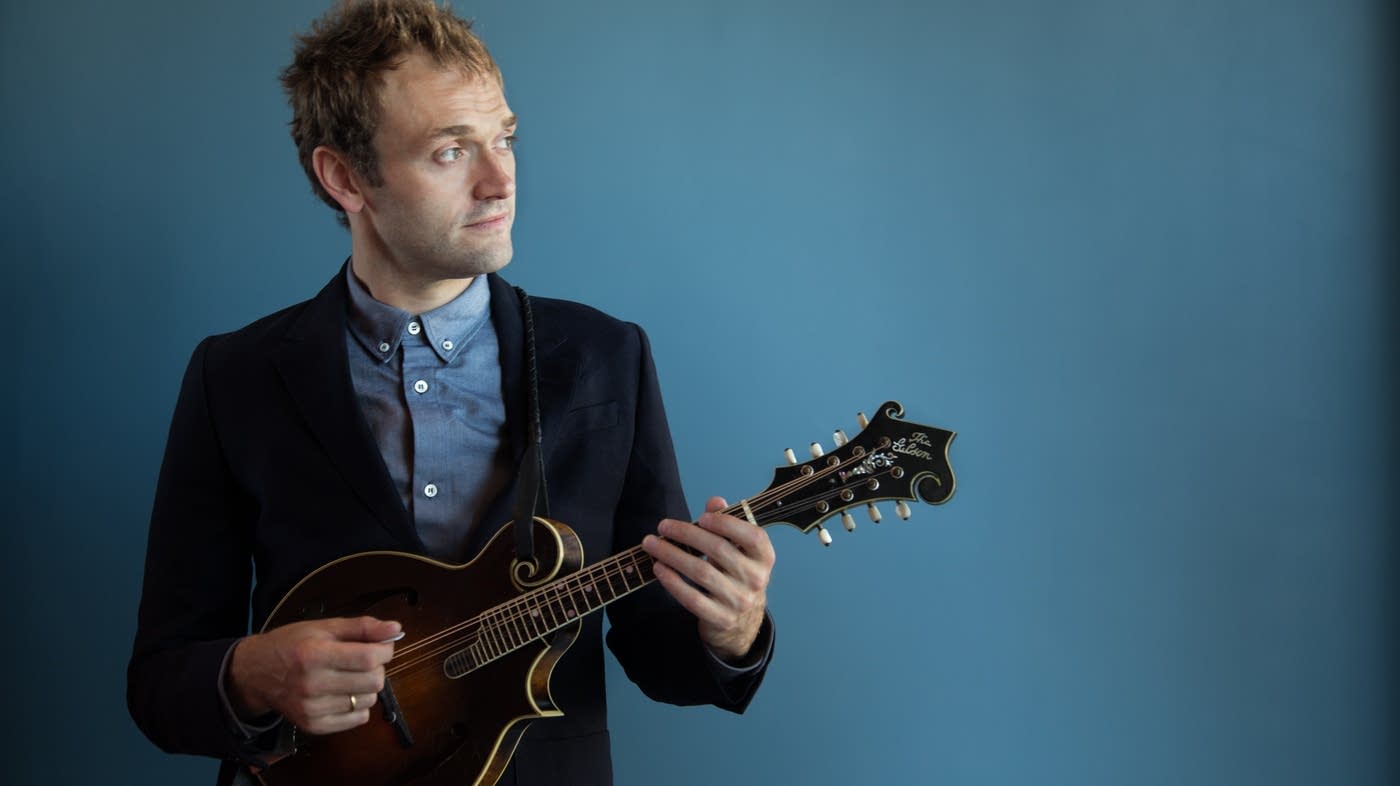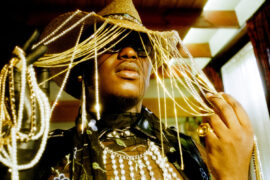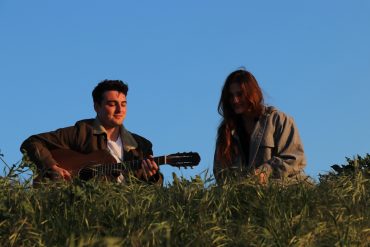Get to know Atwood Magazine‘s writers in our special column where they become the interviewees, sharing their personal playlists and talking about their experiences covering music!
Born in the municipal birthplace of radio, Chelmsford, Essex, Hamish Monk sees music as the best tool mankind has yet invented to understand itself. To write about music for him is as much an effort to appreciate how this mechanism works, as it is exquisitely entertaining.
Atwood Writer’s Playlist: Hamish Monk
Meet Our Writers: Hamish Monk!

Where are you from and where are you based?
Hamish Monk: I’ll confess to a pang of embarrassment when writing that the answer to both is the same. Essex, for all non-British readers (or those fortunate enough to have never heard of the place) is an intermittently handsome county in southeast England, between London and the North Sea. The county’s name comes from a contraction of: Kingdom of the East Seaxe, as founded by the King, Aescwine in AD 527. Like most places in Europe, the area was blighted by Roman invasion – in our case in 54 BC – which led to the city of Colchester (then named Camulodunum) being heralded as the true capital of Roman Britain.
Mine own fair birthplace of Chelmsford, Essex, only becomes relevant to music in a big way on the eve of the 20th century, when an Italian immigrant named Guglielmo Marconi founded the world’s first ever wireless factory in the town centre. The town has henceforth been peppered with signs that read: CHELMSFORD – THE BIRTHPLACE OF RADIO. I often wander past the vestigial factory, where, incidentally, my wife’s grandmother once worked. Marconi’s earthshattering ingenuity is commemorated with a small blue plaque by the door.
The county’s flirtation with the arts continued into the 21st century, serving as the municipal cradle for the bantling members of (in no particular order) Blur, Dr. Feelgood, The Prodigy, Rod Stewart (who is often seen filling potholes in many of our pitted B-roads), Depeche Mode, Alison Moyet, Nothing But Thieves, Yazoo, The Horrors (who cut their teeth at The Chinnerys – a Southend-based music venue which my own band often gigged in) and Rat Boy (who we once supported in town).
But despite this history, Essex is perhaps (and unfortunately) known best internationally for its portrayal in the outwardly gaudy reality TV series, The Only Way is Essex – the majority of which is set but a proverbial pebble’s throw from my house.
How did your journey with music begin?
Hamish Monk: My journey with music began the day I stepped into primary school and was asked by the receptionist which instrument I would like to learn. I answered “trumpet”, of course, and was promptly assured that the requisite teacher for that brassy nightmare was, in fact, sick. “Would you like to try guitar?” the receptionist returned. Begrudgingly, I gave assent…
I now find myself in the fledgling years of my third decade and have not put down the guitar since. The instrument took me on an odyssey, playing in a band with my best friends for over a decade – a time replete with gigs up and down the UK (some big, some ego-shatteringly small); radio shows; interviews; press releases, podcasts, practices, video shoots, tear-ups, hysterical laughter, practices, hysterical tears, practices, an excess of libation, practices, and every other thing in-between.
Oddly enough, the first song I ever taught myself to play on guitar was Gorillaz’ Kids With Guns. Little did I know then that the song’s composer was born in the shadow of my town.
What was the very first concert you attended, and who have you seen most recently?
Hamish Monk: The first live concert I ever attended was Angels and Airwaves. I was so young that I hardly remember the rest. What I do know is that I was pulled along by an older, Irish-born, friend who was clearly heartbroken by the fact Blink-182 had suffered a schism. He seemed to be holding on in quiet desperation for Tom DeLonge’s perpetuity in the public eye. I never was partial to AVA (as they liked to write it), though I retain a soft spot for Blink-182; for sentimental reasons only.
The most recent show I attended was Richard Hawley’s, in the auspicious Hammersmith Apollo, London. Hawley is the darling of contemporary British chamber music, and less than a few can match his rich voice, lush arrangements, and beautifully simple songwriting. Starting out as the touring guitarist for Pulp, Hawley has since released nine studio albums and each boasts at least one timelessly exquisite number.
How did you get into music writing?
Hamish Monk: At the risk of sounding a bit sickly, I’ll venture that writing has always been a part of my life. It is less something I want to do; more that there is nothing else I am able to do. In 2013 I followed the passion into the University of Southampton (known as the city the ill-fated Titanic departed from, or for its tactical flattening by Luftwaffe incendiary bombs in 1940, take your pick). There I studied literature and have been writing professionally in several forms ever since. All the while, I was playing with my band, and so the coming together of these two planets felt as natural as breathing.
Today, I have the distinct privilege of contributing to this fair publication, Atwood, as well as Wonderland and Clunk Magazine.
What’re your favorite moments covering music? Can be from interviews, reviews, in-person events/shows, anything.
Hamish Monk: Nothing quite beats writing about the music one loves. Perhaps that’s not unsurprising, considering the fact we Britons get much of our sustenance from moaning. Admittedly, the odd scathing write-up is handy on the nerves.
I have very much savoured offering my thoughts on the recent singles from Fontaines D.C., Pond, and Chicago-based indie band, Dehd, for Atwood.
This very feature – Meet Our Writers – has provided many returns, also; forcing me to undertake the unusual exercise of trawling back through my life and reconsidering my relationship with music, as well as all the sounds that have been so personal to me.
My playlist, then, is less an exhaustive record of my all-time favourite tracks (that wouldn’t be interesting) – rather, a collection of the sounds that have accompanied me during the most emotional milestones of my life. I think of it as a sentimental diary-of-sorts – in the most macro and sweeping of forms. Like the olfactory sense, music really is the closest we humans have come to inventing a time portal.
What’s something you’ve learned from working as a music journalist?
Hamish Monk: Not all of aesthetics has music as subjective. There are objective standards one can appeal to.
If you could ask one question to any artist or band, who would it be and what would you ask?
Hamish Monk: I would ask John Lennon to comment on the posthumous allegations of racism and domestic abuse.
Who are your favorite up-and-coming artists right now?
Hamish Monk:
- Fontaines D.C. (or perhaps they have come up?);
- The Last Dinner Party (I love the kooky, Kate Bush-esque chic. And by the way, industry plants tend to have their songs written for them – and way more choreography, pageantry and pompery in their sets!);
- Dehd (an exciting, feelgood outfit with hooks stickier than a gecko’s foot).
What music are you most looking forward to this year?
Hamish Monk: With respect to new material, I would have to point in the direction of Neil Young’s Neil Young Archives Vol. III, due to us September 6th. The man is to music what DiCaprio is to film; never found doing tripe. On the same day will be released Toro y Moi’s Hole Erth.
Looking farther into the future, I am also energised by album releases such as Floating Points’ Cascade; Bob Dylan & The Band’s The 1974 Live Recordings; Aphex Twin’s Selected Ambient Works Volume II (Expanded Edition); Caribou’s Honey; Leon Bridges’ Leon; Karl Blau’s Vultures of Love; Laura Marling’s Patterns in Repeat; Pixies’ The Night the Zombies Came; and Primal Scream’s Come Ahead.
Regarding gigs, I will gladly be watching Fontaines D.C. on their Romance tour, in Manchester, at the end of November. The album has very much served as a defibrillator for British guitar music.
Here goes a special mention to my Essex contemporaries (though I do not wish to imply my band’s talent could possibly equal theirs) Death of Guitar Pop – a truly electric and eclectic Ska outfit. They wield the noble torch of independent music high above their heads, and boast tracks that can rival even The Beatles.
What are the top 5 songs on your playlist?
Hamish Monk:
- Always the Sun, The Stranglers
This song had a place on a compilation CD that my parents acquired before the millennium, as a freebie with some music magazine or other. It is the first piece of music I can recall actually doing something to me.
It was summer, perhaps 1999, and my parents had taken us camping in Suffolk (the birthplace of John Constable, Benjamin Britten, John Peel, and Brian Eno). We were towing and sleeping in this lunchbox-looking, beige tourer caravan made in the 70s. I can still smell its musky upholstery. As this CD was sucked into the player, and the Stranglers busted out of its meshy speakers, I was playing with my younger brother in a field nearby. My father was sitting in a deck chair with a glass of beer, my mother was washing up in the caravan, and I had become mystified by this armada of bumble bees that came sailing across the campsite. The chorus seemed to perfectly match the spectacle. I was enveloped in this warm feeling that my life was soon to start, and the expectation was limitlessly moving. Of course, I now understand this was no warm up. Life was indeed happening to me: there and then.
I love this song even more today than I did then, and like to imagine it being Rupert Murdock’s favourite. I carry that line with me: “If you work too hard, you can sweat.”
- Be Above It, Tame Impala
I discovered Lonerism late, in around 2015. I was in my second year of University and had fallen in love. This album set off a bomb in my brain and spoke to me more than any other piece of music before. I spotlight Be Above It because it is the LP’s opener, which I would play after my seminars on a Friday evening, as I stepped onto the coach at Southampton, for London – where my girlfriend at the time was receiving a formal education in dance. I would listen to the entire album through and then play it from the beginning again, until I eventually stepped off at London Victoria station. There are many times in my life I would have done well to heed Kevin Parker’s injunction: “I know that I’ve gotta be above it now.”
I am glad to say that I am now married to, and have a beautiful child with, that same woman I would religiously visit every weekend in 2015.
- Since You’re Gone, The Cars
I graduated in 2016, returned to my hometown, and acquired my first car: a seafoam green Nissan Figaro. At that point I was about 21 and the car was at least four years my senior. It had this off-white soft top that would yield into the retracted position with more than a bit of wrestling and foul language. One anomalous day the engine miraculously refused to fail, so I seized the opportunity, took off down a winding country road in the balmy heat and parked up. Compelled by sheer curiosity I plundered the glove compartment. There was a cassette tape: The Cars’ 1981 album, Shake It Up. It had clearly been left by the previous owner – an elderly man whose complacency changed my life for the better. I pushed the translucent plastic case into the player and out from the Figaro’s tinny speakers came Since You’re Gone. When I hear this song now, I think of gilded fields of corn sailing by the window, and true freedom.
- Inner City Blues, Marvin Gaye
This song – and the album more broadly – forever altered my perception of music: from that of an artform which at its best serves as an island of refuge from the gravity of everyday life and politics, to a vehicle through which insights into an individual’s struggle can be delivered. It is coincidental, then, that What’s Going On is considered seminal, thanks to its role in turning Motown into a serious (I do hate to use that word), political genre. This is owed to its criticism of the US’ thinly veiled Cold War-battle against the USSR and communist influence on Vietnamese soil. As long as music is made by people (no, not even that is guaranteed now) politics will and must be an intrinsic part of it. This is the reason AI-produced art will never quite be authentic; only harvested from the detritus of human experience.
- Babylon System, Bob Marley
I would be closing unduly without a nod in the direction of another great song and album that advocates for the place of politics in music. I was recommended Bob Marley’s 1979 album, Survival, by the singer in my band – and, more significantly, my great friend to this day – Callum Quirk. He had visited an Essex-based record shop, pithily named Slipped Discs, and was handed the vinyl by the personable owner, in exchange for a fistful of cash. A spin or two later and Mr. Quirk’s mind positively blown, he came to me pinning every hyperbole under the sun to the record. I listened and was, too, married to the thing for months.
Survival’s unmistakable artwork depicts 48 African flags (15 of which are now obsolete). It was Marley’s desire to see all of these nations unite against the yoke of European colonialism. The album’s title appears on the cover in white, with the grotesque Brookes slave ship engraving behind it. That was strangely controversial at the time.
The track itself, Babylon System – along with the rest of the album – transmits the story of the attempted assassination attempt of Bob Marley and his band, by enforcers of the Jamaican Labour Party’s, Edward Seaga. The assailants came armed to Marley’s band practice in Kingston, on December 3, 1976, and shot him, his wife, his manager, and another band employee. Mercifully, everyone survived.
The attempted murders were brought about my Marley’s perceived, and growing, support of Jamaica’s prime minister, Michael Manley, and the democratic socialist People’s National Party (PNP) – who were campaigning for progressive reforms. The objective was to prevent the Wailers from playing the Smile Jamaica Concert, which sought to push the PNP’s message of peace in the region, as well as the jettisoning of Western influence in Africa.
The plot thickened when it was alleged that one of the gunmen was also in cahoots with the CIA, which paid for the shooting with narcotics and guns. The United States’ motive was to retain influence over the Caribbean, via the puppet Jamaican Labour Party.
Defiantly, Marley and his band played the festival two days later. Survival, one of the greatest albums of all time, charts this triumph in the face of despotism.
— — — —

Connect to Hamish Monk on Twitter!
Discover new music on Atwood Magazine
:: Stream Hamish’s Playlist ::








